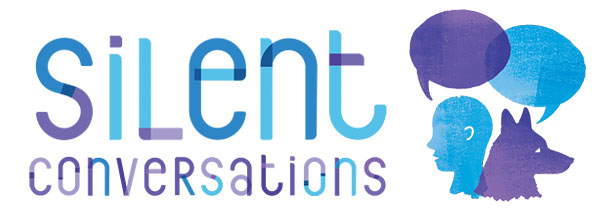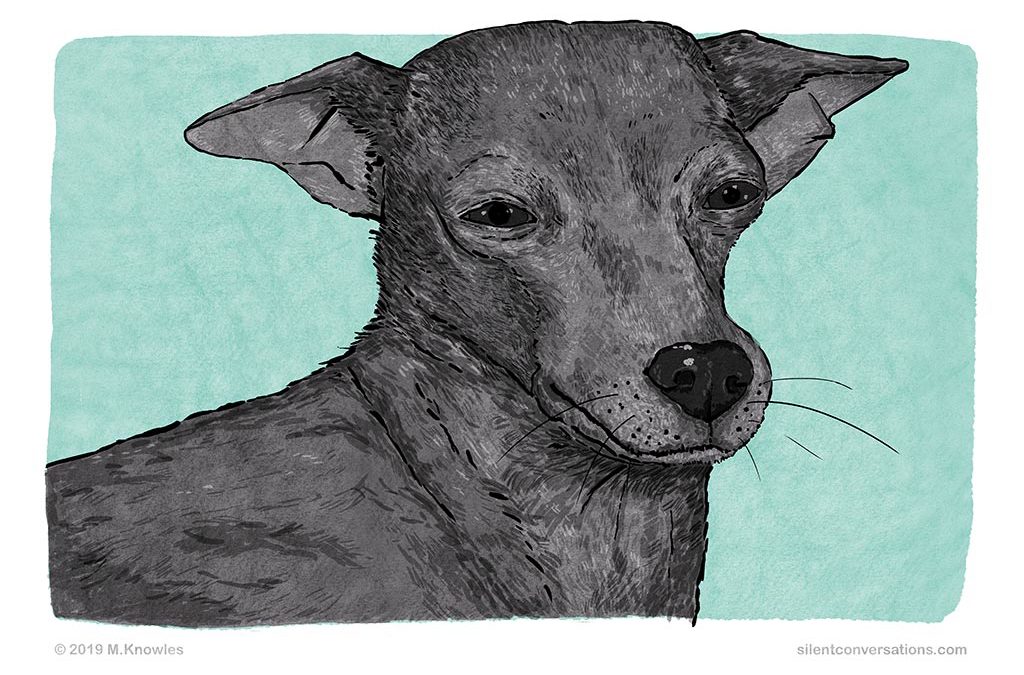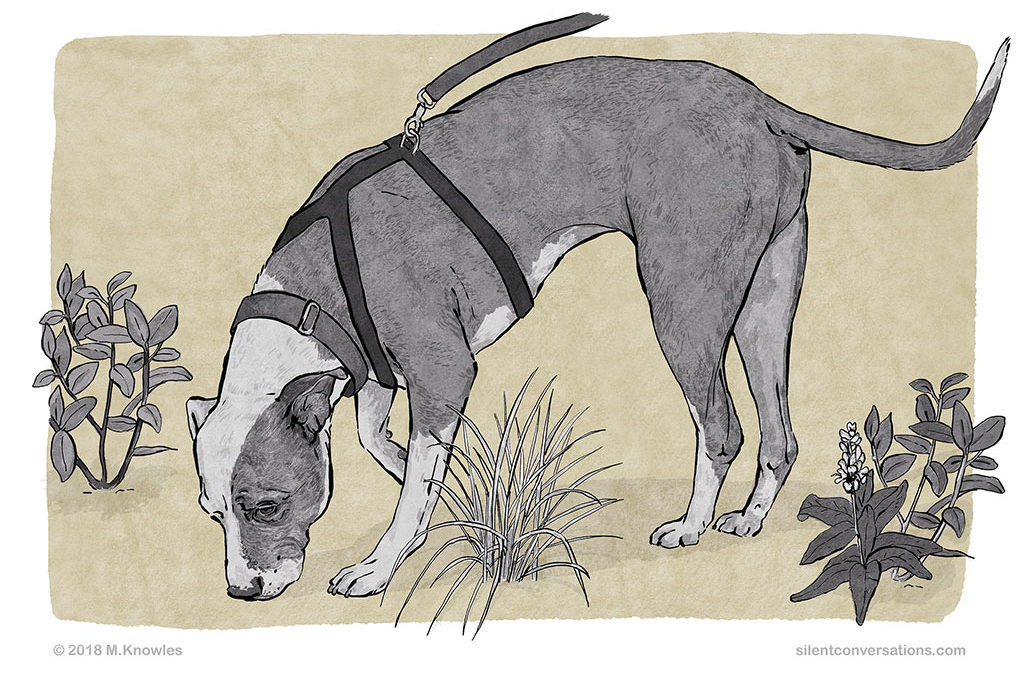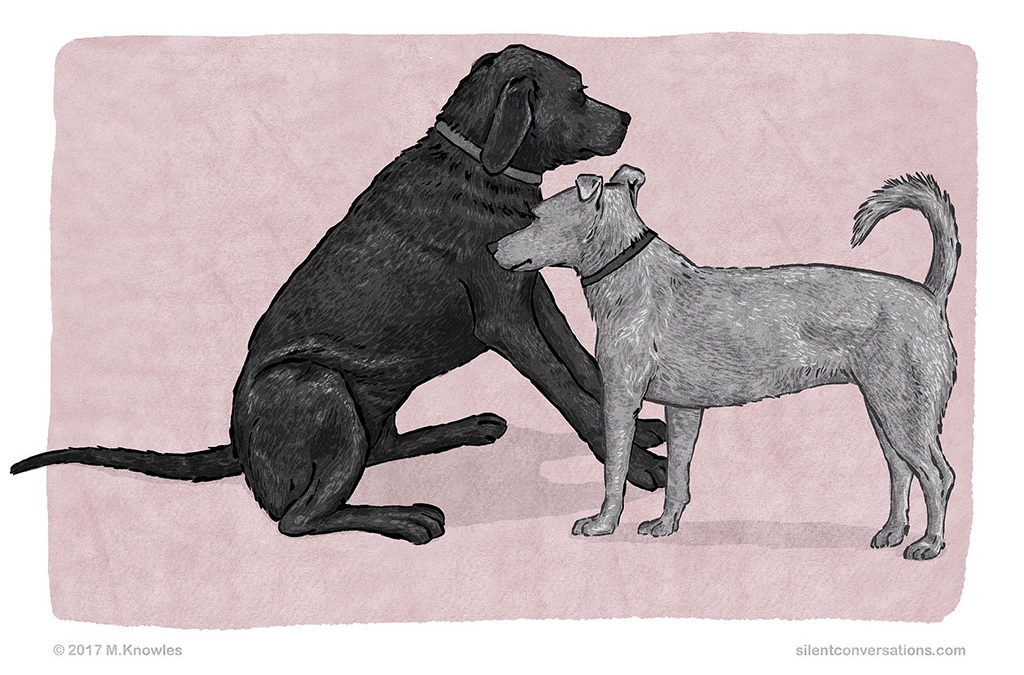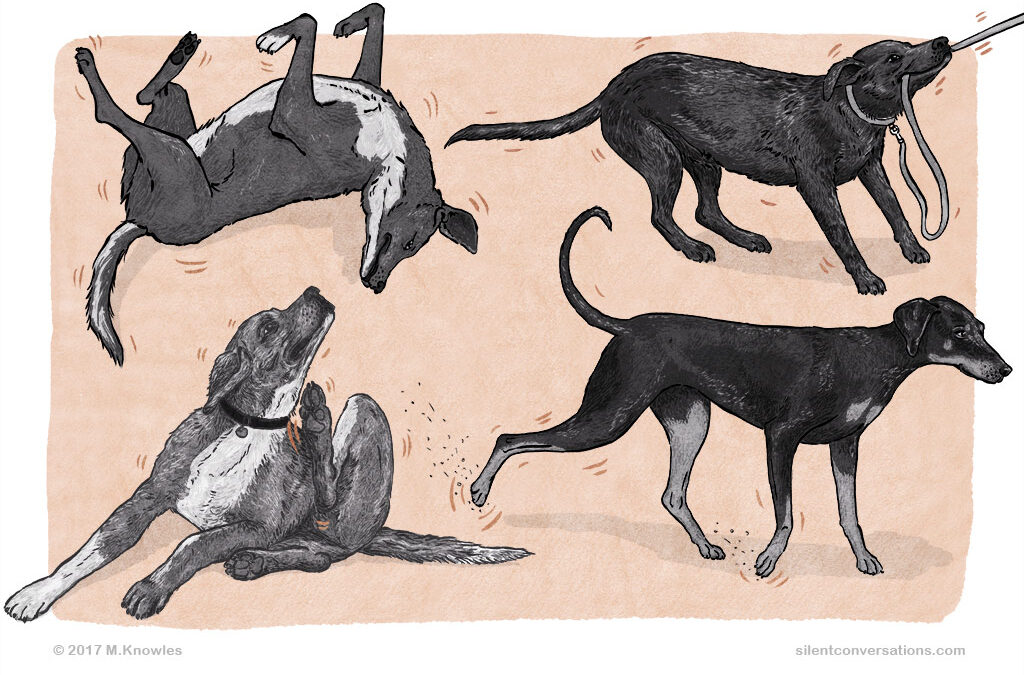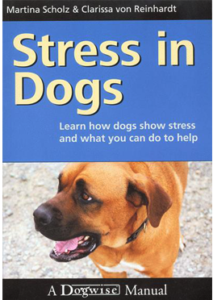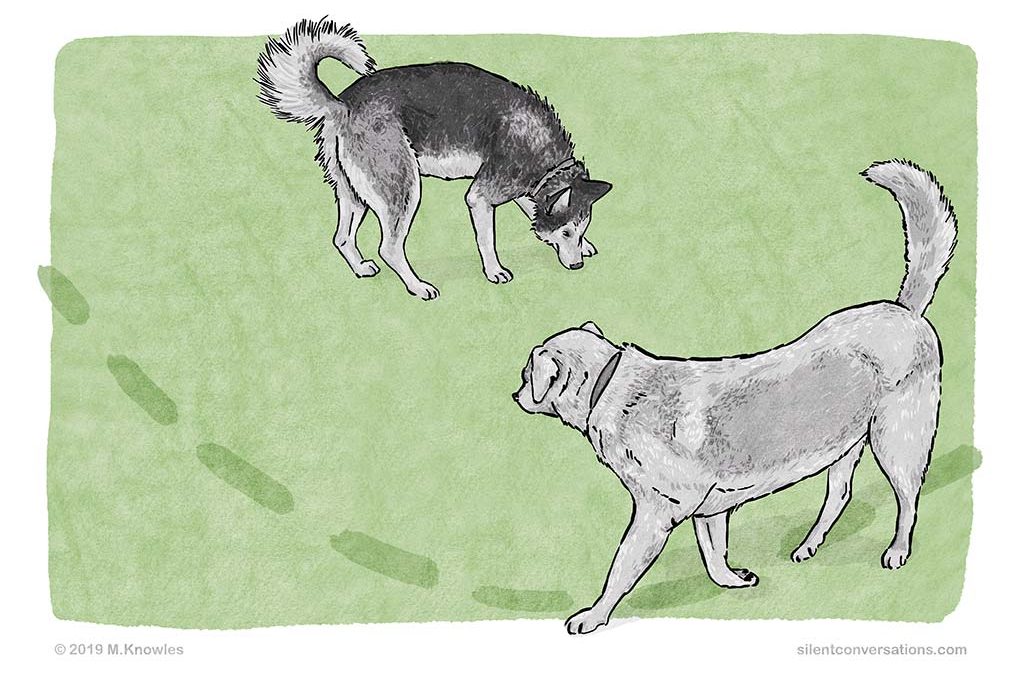
Curving – Dog Body Language
Curving – Dog Body Language
The deliberate dog body language of curving is used in polite greetings, negotiation, or as a calming signal. A head-on, frontal approach can be seen as confrontational. The curving could be the curving of the dog’s body (which makes a slight c-shape), or a directional curve in the path the dog walks on approach. Some have described it as a ‘banana walk’, an easy descriptive way to imagine the direction of walk, due to the shape of the path taken by the dog.
Curving of the body, however slight, results in the dog’s shoulders turning away from the other party in greeting. Keeping the shoulders square and front on could signify a bit of tension and may come across as confrontational or too direct. Turning the shoulder ever so slightly is polite. The curve, whether a curve in path or body, can be subtle and slight; on other occasions it can be exaggerated and there can also be a combination of curving of body and path.
When two dogs get close enough to greet and sniff each other’s rears, they will do so by curving their bodies and walking around each other in a curve. Normally they will take a quick sniff of each other’s rear ends and move on afterwards. Some dogs choose not to approach each other at all, but they will walk in a curve past each other as a negotiation signal, giving each other space and passing one another politely.
If a dog has a loose leash, enough leash to make choices, and the social skills, there are times when he may actually choose to curve when passing another party. It is worth bearing in mind how some equipment can interfere with the dog’s communication. There are times when we, as humans, do not realize the importance of curving in polite dog greetings and will walk directly with our dogs on a short leash towards another party. Unfortunately, the choice of curving may also not be considered when walking on a pavement where space is limited when approaching another party.
Humans can utilize acts of curving with dog interactions. To approach a dog politely, instead of walking straight towards the dog in our very human direct way, you could walk in a slight curve. On approach, turning your shoulder away ever so slightly can put a dog at ease and is polite.
To read further in more depth about curving, you could consult the following longer article reflecting on head-on and curved approaches: ‘Considering the effects of walking or running straight towards a dog’. At the end of the article there is a link to a video showing how subtly a dog may choose to curve.
For further information as to how to approach a dog politely, please read: ‘How do you greet a dog politely?’
Here are a few examples of situations where a dog may use curving as communication:
- Two dogs spot each other across an open field. The one dog decides to stand still, and she faces the other dog. She looks slightly tall, with ears held up and forward, and her mouth is closed. The other dog decides to approach. He trots over towards her in a curve. As he gets closer, he slows down, still walking in a curve. He drops his head down and does a slight look away. As he gets near to her, she does a head turn and offers a lip lick. He then takes quite a sharp curve, both with body and direction of movement, in an attempt to go round her towards her rear end. She turns her head away in the opposite direction of his curve, effectively looking away from him. When he attempts to curve closer, she walks up towards him and cuts off his curve. They meet awkwardly nose to nose. His body is facing side-on to her, so his shoulder is facing her, his ears are slightly to the side, and his tail is body height. She faces him front on with a slightly lowered body, her back hunched over, her tail tucked, and her ears pressed to the side of the head. The weight of her body is balanced on her back legs, pushing her body in a slight backward direction. She drops her head and squints her eyes slightly as she sniffs his nose. His head raises slightly, ears to the side, and he gives slight head turns and fast tail wags. She does a paw lift, ducks her head, and moves away from him quickly. At this point, another dog runs up to the pair and splits the two by walking in-between them. The dog that first approached her has tried to be polite by curving, slowing his pace, and offering head turns on approach. Even with all the polite body language offered, she was already showing some discomfort at the beginning of the interaction by standing tall, facing him, and not approaching. Then, as he finally came near to her, she changed her body language drastically by lowering her body, hunching up (making herself smaller), with tail tucked, indicating her unease. She also cut off his attempt to sniff her rear end. The dog that intervened saw her discomfort, noticed she was struggling with the interaction, and came to split the pair.
- Two people are walking their dogs in a wooded area; each is walking with their dog off lead. As they reach an open area, the people spot each other and approach to say hello. The dogs, unlike their guardians, choose not to stop, but both take a wider berth by curving around each other at distance and using the humans as a barrier between them. The Labrador walks next to his guardian with a loose body, tail wagging at a slow and steady pace. The German shepherd walks a little behind his guardian at a slower pace, his tail down, head slightly dipped, and ears to the side. As the two people stop to chat to one another, both dogs continue walking past each other slowly in a curve around the people. The shepherd takes a wider curve. The lab looks over to the shepherd, which avoids looking directly at the lab and gives a quick head turn. The lab then does a head turn and dips his head down to sniff the ground as he continues to slowly curve past the shepherd. Both guardians have now finished their quick greeting and carry on with their respective dogs in opposite directions from each other. Both dogs pick up pace again as they continue the walk with each of their guardians.
- A person is walking his dog on a loose leash on a path in the park. As they walk down the path, another person walks towards them. The dog slows his pace and dips his head down (as if to sniff the ground) whilst keeping his eye on the approaching person. He crosses over behind his guardian as they near the person and uses his guardian as a slight barrier, walking slowly in a curve as he passes by.
These are just a few examples; there may be many more. Start observing to see if you can notice curving in different contexts. As discussed below, interpretations such as the above examples should not be attempted without careful observation and consideration of all aspects of the situation.
A few notes to consider when observing dog body language:
Observation before interpretation
Interpretations should be offered only once you have observed the complete interaction and taken note of the wider picture. To offer an unbiased interpretation of the body language, observe and take note of the situation, taking into account the dog’s whole body, the body language signals and environment first before offering an interpretation. List all the body language you see in the order that it occurs; try to be descriptive as possible without adding any emotional language. For instance, saying a dog looks happy is not descriptive and would be seen as an interpretation rather than an observation.
You could however list what you observe: ears to the side, eyes almond shaped, slight shortening of the eye, mouth open, long lips, tongue out, body moving loosely, body facing side-on, tail wagging at a slow, even pace at body level.
From the observation I could interpret that the dog seems relaxed or comfortable. I still prefer to say relaxed rather than happy, as I feel you will truly never know exactly what the dog may be feeling on the inside emotionally. It is quite likely the dog may be feeling happy, but I prefer to comment on how the dog is behaving in response to the situation rather than presuming internal emotional states.
The importance of viewing body language within context
Interpretations can vary depending on the context. It is possible for certain body language to be used in different contexts and have subtle differences in meaning within those contexts. Individual body language signals should not be observed in isolation; the wider picture should be considered. Take note of what the dog’s body as a whole is saying. Keep in mind each dog is an individual with varying skills and experiences. What may be typical for one individual may not be for another. In order to observe body language in context, consider the following: the situation, body language signals, the body language expressed by all parts of the dog’s body, the environment, and the individuals involved. It is worth noting how the body language changes with feedback from the environment or the other individuals interacting.
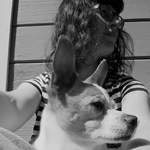
Martha Knowles
Author
My vision is to create a community of dog guardians who share their observations and interpretations of their dogs’ silent conversations. Hopefully, these experiences and stories will provide some insight into dog communication, which is often overlooked by the untrained eye because it is unfamiliar to humans. We are accustomed to communicating mainly with sound, so we are not attuned to the silent subtle gestures and body language used by dogs to communicate. If you take the time to observe, you will start to see these 'silent conversations' going on around you. My dream is for dog communication to become common knowledge with all dog guardians and as many people as possible. Surprisingly, there are still some professionals working in various dog-related careers who are uneducated about dog body language. Greater awareness of how dogs communicate will help to provide better understanding and improve the mutual relationship between dogs and humans. This will promote safer interactions between our two species and hopefully remove some of the expectations placed on dogs within human society. I would like dog guardians to feel empowered with their knowledge of dog communication so that they can be their dogs’ advocates and stand up for themselves and their dogs when it really matters.
